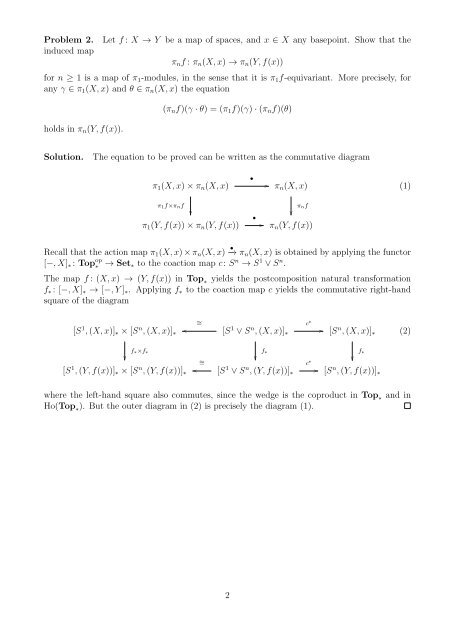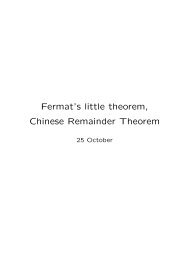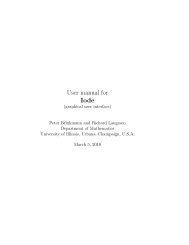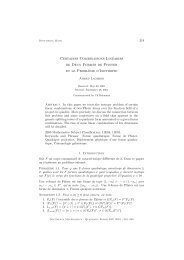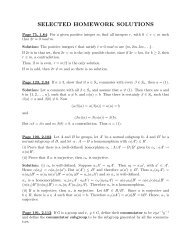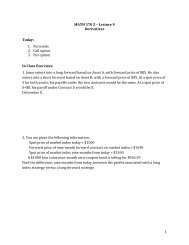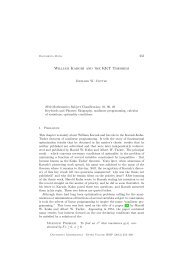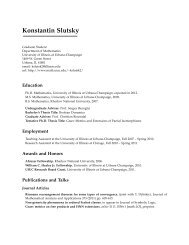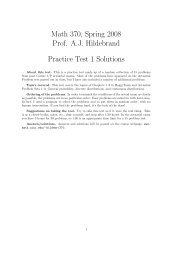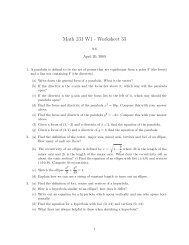Math 527 - Homotopy Theory Spring 2013 Homework 3 Solutions ...
Math 527 - Homotopy Theory Spring 2013 Homework 3 Solutions ...
Math 527 - Homotopy Theory Spring 2013 Homework 3 Solutions ...
You also want an ePaper? Increase the reach of your titles
YUMPU automatically turns print PDFs into web optimized ePapers that Google loves.
Problem 2. Let f : X → Y be a map of spaces, and x ∈ X any basepoint. Show that the<br />
induced map<br />
πnf : πn(X, x) → πn(Y, f(x))<br />
for n ≥ 1 is a map of π1-modules, in the sense that it is π1f-equivariant. More precisely, for<br />
any γ ∈ π1(X, x) and θ ∈ πn(X, x) the equation<br />
holds in πn(Y, f(x)).<br />
(πnf)(γ · θ) = (π1f)(γ) · (πnf)(θ)<br />
Solution. The equation to be proved can be written as the commutative diagram<br />
π1(X, x) × πn(X, x)<br />
π1f×πnf<br />
<br />
π1(Y, f(x)) × πn(Y, f(x))<br />
•<br />
•<br />
<br />
πn(X, x)<br />
πnf<br />
<br />
<br />
πn(Y, f(x))<br />
Recall that the action map π1(X, x) × πn(X, x) • −→ πn(X, x) is obtained by applying the functor<br />
[−, X]∗ : Top op<br />
∗ → Set∗ to the coaction map c: S n → S 1 ∨ S n .<br />
The map f : (X, x) → (Y, f(x)) in Top ∗ yields the postcomposition natural transformation<br />
f∗ : [−, X]∗ → [−, Y ]∗. Applying f∗ to the coaction map c yields the commutative right-hand<br />
square of the diagram<br />
[S 1 , (X, x)]∗ × [S n , (X, x)]∗<br />
<br />
f∗×f∗<br />
[S 1 , (Y, f(x))]∗ × [S n , (Y, f(x))]∗<br />
<br />
<br />
∼=<br />
∼=<br />
[S 1 ∨ S n , (X, x)]∗<br />
<br />
f∗<br />
[S 1 ∨ S n , (Y, f(x))]∗<br />
c ∗<br />
c ∗<br />
<br />
[S n , (X, x)]∗<br />
f∗<br />
<br />
<br />
[Sn , (Y, f(x))]∗<br />
where the left-hand square also commutes, since the wedge is the coproduct in Top ∗ and in<br />
Ho(Top ∗). But the outer diagram in (2) is precisely the diagram (1).<br />
2<br />
(1)<br />
(2)


